Last week, we teamed up with VanEck (Mr Roland Morris Jr., Portfolio Manager & Strategist at VanEck) for a webinar to explore inflation, and discuss how commodities (gold, energy, agriculture) and certain sectors (Consumer Staples, Financials etc.) behave in an inflationary environment.
Here’s a quick recap:
Inflation is at the highest level in nearly 40 years
VanEck is of the view that the Federal Reserve may not be well-positioned to fight inflation. This is largely due to high debt-to-GDP levels in the US, which makes it difficult to significantly raise rates. In the last attempt to raise rates in 2016, the Fed was only able to reach 2.5%.
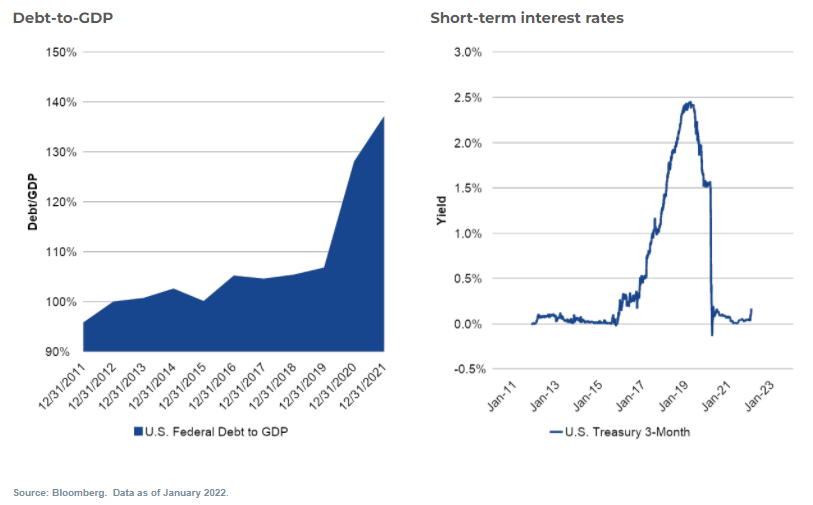
How can investors position their portfolios?
Real assets such as gold and commodities have historically performed well in an inflationary environment, outperforming stocks and bonds when inflation is elevated in the short term.
The chart below shows performance of Commodities, Gold, Equities and Fixed Income from 1969 to 1981. As the Consumer Price Index (CPI) increases, Gold and Commodities showed higher relative outperformance over Equities and Fixed Income. During this time, the Federal funds rate was much higher at 4-17%.
Also, VanEck believes that many investors have relatively underweight allocations to commodities and this could be an area of interest.
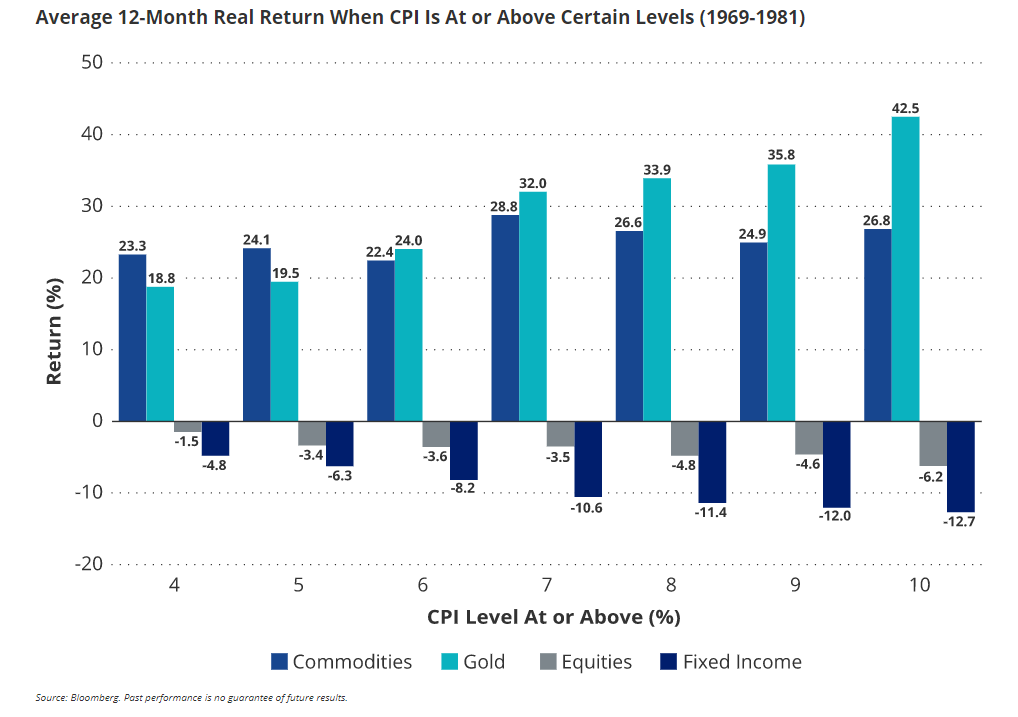
Long-term trends support the outlook for commodities
Commodities include mining and mineral resources: base metals (lead, copper, aluminum), precious metals (gold, silver, palladium), rare and earth metals (cerium, manganese, titanium and tungsten).
According to VanEck, the move to cleaner and greener energy sources is spurring new and increased applications of metals and minerals. Key input minerals for clean energy technologies like lithium, manganese and cobalt are already seeing dramatic price increases.
3-Year cumulative price change for various clean energy technology metals
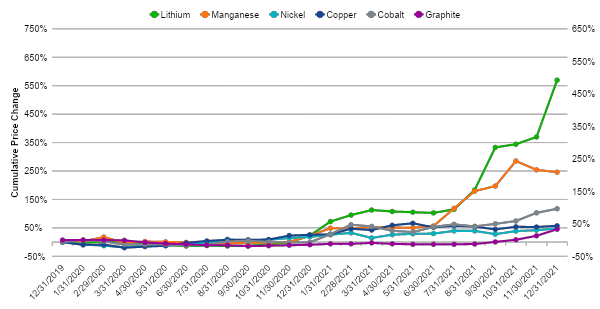
For instance, an electric car requires more copper and manganese, as well as at least six more metals, as compared to a conventional car.
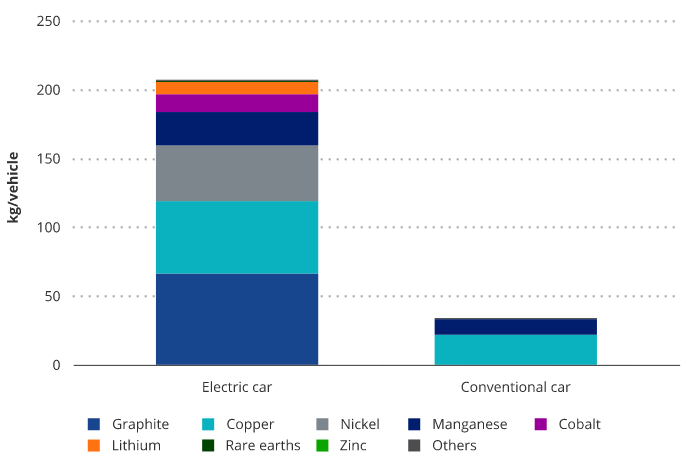
At the same time, generating new supply of such minerals isn’t as simple as “flipping the switch”. It can take up to 17 years for new mining projects to reach production.
Average mining project development lead times (from discovery to production)
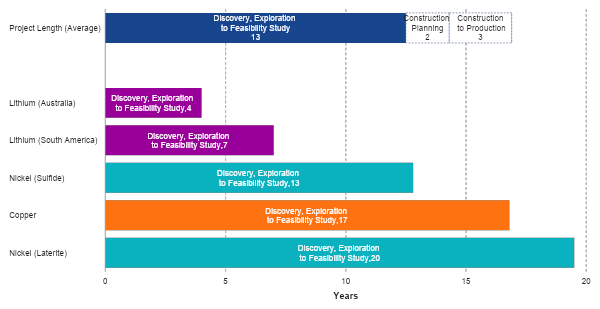
How Syfe can help
For investors considering the inflation hedging ideas shared by VanEck, we highlighted several ETFs within Syfe Custom to explore.
The Syfe Custom portfolio builder holds over 100 best-in-class ETFs across a broad range of sectors. Clients can build their own portfolio(s) containing up to 8 ETFs and determine their own ETF allocations.
Management fees range from 0.65% to 0.35% per year and there’s no minimum to start.
Here’s a snapshot of ETFs covering commodities, metals and mining, and key components that you can find on Syfe Custom.
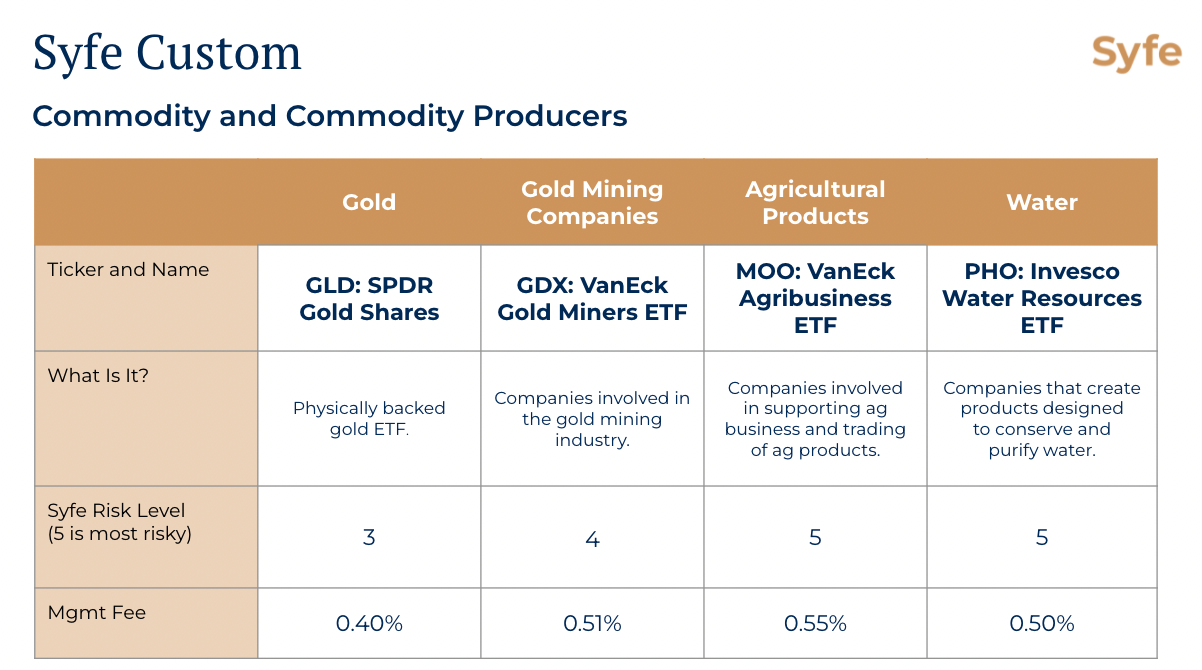
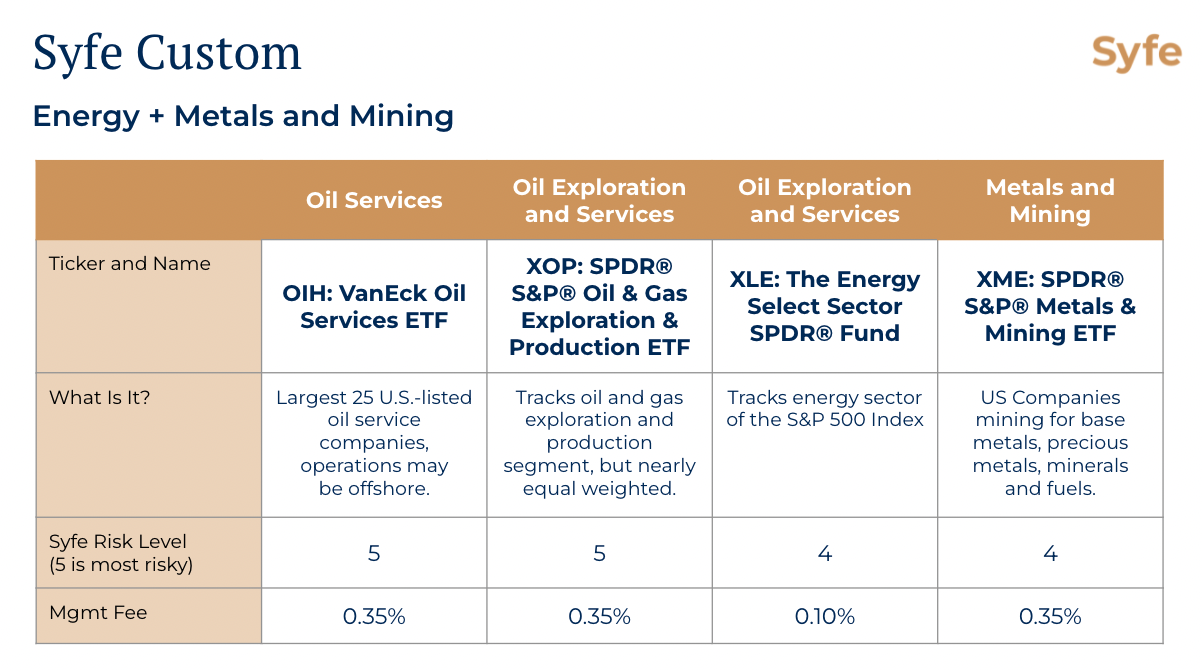
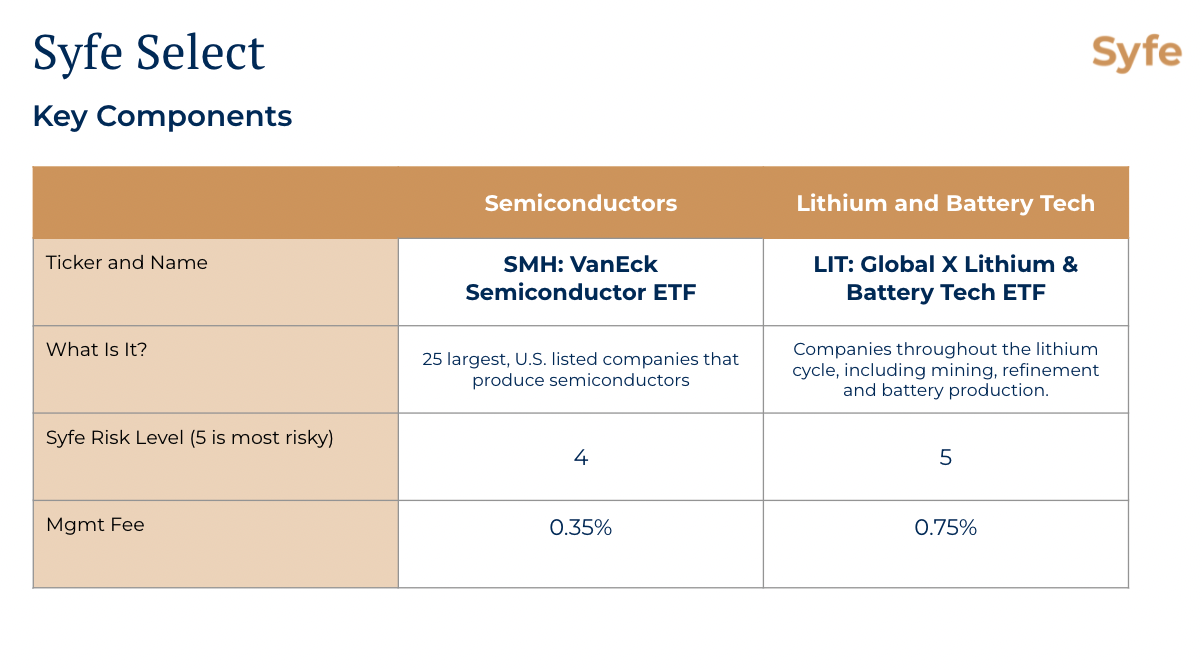
If you prefer a self-directed approach to ETF investing, you may also consider buying the above ETFs through Syfe Trade. Syfe Trade is a brokerage platform for US stocks and ETFs. When you use Syfe Trade, you get to enjoy free monthly trades, low fees, and fractional investing.
Plus, you can earn over S$200 in cash credits with the Syfe Trade launch promotion!


